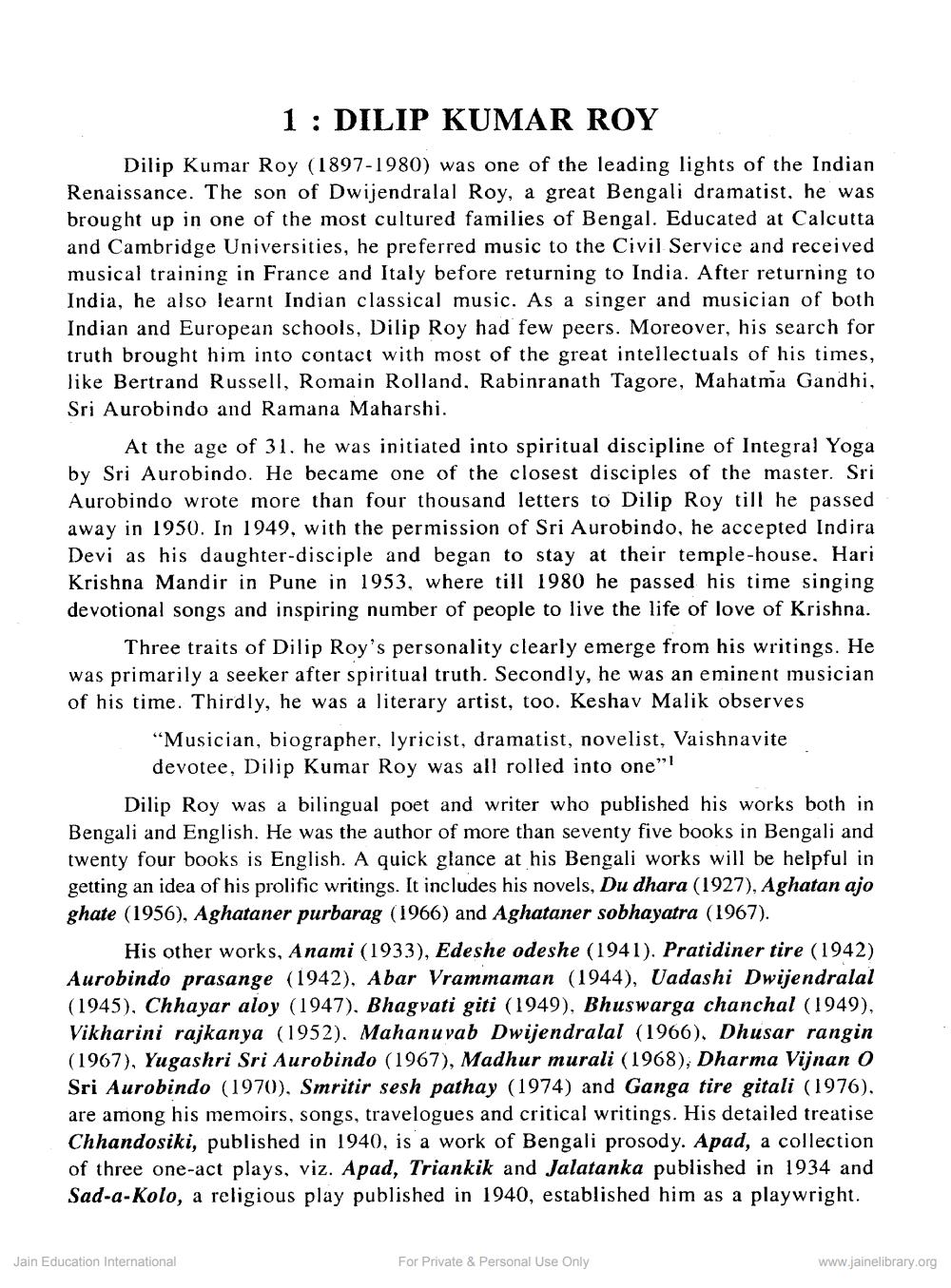________________
1: DILIP KUMAR ROY
Dilip Kumar Roy (1897-1980) was one of the leading lights of the Indian Renaissance. The son of Dwijendralal Roy, a great Bengali dramatist, he was brought up in one of the most cultured families of Bengal. Educated at Calcutta and Cambridge Universities, he preferred music to the Civil Service and received musical training in France and Italy before returning to India. After returning to India, he also learnt Indian classical music. As a singer and musician of both Indian and European schools, Dilip Roy had few peers. Moreover, his search for truth brought him into contact with most of the great intellectuals of his times, like Bertrand Russell, Romain Rolland, Rabinranath Tagore, Mahatma Gandhi, Sri Aurobindo and Ramana Maharshi.
At the age of 31. he was initiated into spiritual discipline of Integral Yoga by Sri Aurobindo. He became one of the closest disciples of the master. Sri Aurobindo wrote more than four thousand letters to Dilip Roy till he passed away in 1950. In 1949, with the permission of Sri Aurobindo, he accepted Indira Devi as his daughter-disciple and began to stay at their temple-house. Hari Krishna Mandir in Pune in 1953, where till 1980 he passed his time singing devotional songs and inspiring number of people to live the life of love of Krishna.
Three traits of Dilip Roy's personality clearly emerge from his writings. He was primarily a seeker after spiritual truth. Secondly, he was an eminent musician of his time. Thirdly, he was a literary artist, too. Keshav Malik observes
"Musician, biographer, lyricist, dramatist, novelist, Vaishnavite
devotee, Dilip Kumar Roy was all rolled into one"!
Dilip Roy was a bilingual poet and writer who published his works both in Bengali and English. He was the author of more than seventy five books in Bengali and twenty four books is English. A quick glance at his Bengali works will be helpful in getting an idea of his prolific writings. It includes his novels, Du dhara (1927), Aghatan ajo ghate (1956), Aghataner purbarag (1966) and Aghataner sobhayatra (1967).
His other works, Anami (1933), Edeshe odeshe (1941). Pratidiner tire (1942) Aurobindo prasange (1942), Abar Vrammaman (1944), Uadashi Dwijendralal (1945), Chhayar aloy (1947), Bhagvati giti (1949), Bhuswarga chanchal (1949), Vikharini rajkanya (1952), Mahanuvab Dwijendralal (1966), Dhusar rangin (1967), Yugashri Sri Aurobindo (1967), Madhur murali (1968), Dharma Vijnan 0 Sri Aurobindo (1970), Smritir sesh pathay (1974) and Ganga tire gitali (1976), are among his memoirs, songs, travelogues and critical writings. His detailed treatise Chhandosiki, published in 1940, is a work of Bengali prosody. Apad, a collection of three one-act plays, viz. Apad, Triankik and Jalatanka published in 1934 and Sad-a-Kolo, a religious play published in 1940, established him as a playwright.
Jain Education International
For Private & Personal Use Only
www.jainelibrary.org




